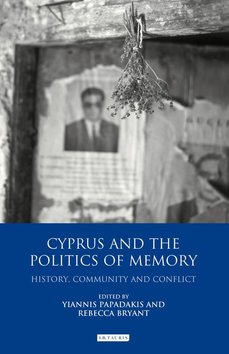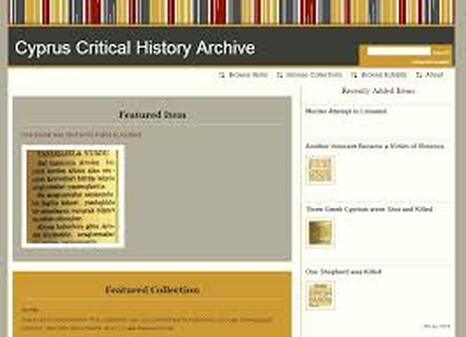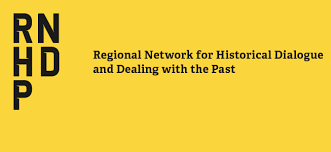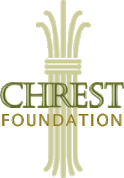The Zugdidi border crossing between Georgia and the unrecognized state of Abkhazia. Photo by R. Bryant.
On a map, a border clearly marks the territory of a sovereign state and indicates to us what people it "naturally" encompasses. Because of this, in popular conception, a border appears to separate "home" from "abroad" and allow us to control who is admitted to our "domestic" space. From an anthropological perspective, however, a border is primarily a practice, a means to control the movement of people and a site of place-making that defines the national "body." Bordering as verb refers to this ongoing process of state-formation in which an integral national geobody is created and maintained.
Much of my research has concerned borders and bordering, particularly the role of forced migration in the definition and upkeep of borders. Borders emerge through uprooting or division of communities and are maintained through histories and memories of persons and places now absent. In two recent books, I have explored how displacement, resettlement, and the disentangling of peoples have been key means for constituting and reproducing borders. Displacement and dispossession, in this view, are not only past events but are on-going processes that make national place. In The Past in Pieces: Belonging in the New Cyprus, for instance, I explore the role of memory and forgetting in maintaining a partition line that is not internationally recognized as a border. After the easing of movement restrictions in 2003, Cypriots explained acts of crossing or refusing to cross through particular histories and their half-lives in the present. In De Facto Dreams: Building the So-Called State, on the other hand, my co-author and I show the role of forced migration in the building of an unrecognized border, not only through cleansing a territory but also through the resettlement of populations as the foundation for a new state.
My research, however, has not only concerned political borders but also social and historical ones. Conducting research in an ongoing conflict, one of the primary questions is always how people could have lived together peacefully before the conflict, and how it might be possible again. This has led me to develop a body of work on the divides of history in the island, as well as on the everyday diplomacy that enables coexistence and the historical reconciliation that may make that coexistence possible again.
Much of my research has concerned borders and bordering, particularly the role of forced migration in the definition and upkeep of borders. Borders emerge through uprooting or division of communities and are maintained through histories and memories of persons and places now absent. In two recent books, I have explored how displacement, resettlement, and the disentangling of peoples have been key means for constituting and reproducing borders. Displacement and dispossession, in this view, are not only past events but are on-going processes that make national place. In The Past in Pieces: Belonging in the New Cyprus, for instance, I explore the role of memory and forgetting in maintaining a partition line that is not internationally recognized as a border. After the easing of movement restrictions in 2003, Cypriots explained acts of crossing or refusing to cross through particular histories and their half-lives in the present. In De Facto Dreams: Building the So-Called State, on the other hand, my co-author and I show the role of forced migration in the building of an unrecognized border, not only through cleansing a territory but also through the resettlement of populations as the foundation for a new state.
My research, however, has not only concerned political borders but also social and historical ones. Conducting research in an ongoing conflict, one of the primary questions is always how people could have lived together peacefully before the conflict, and how it might be possible again. This has led me to develop a body of work on the divides of history in the island, as well as on the everyday diplomacy that enables coexistence and the historical reconciliation that may make that coexistence possible again.
Coexistence and everyday diplomacy
|
Throughout Southeast Europe and the Middle East, many former spaces of interaction are now sites of past violence and are marked by the absence of groups who had once lived there. Post-Ottoman spaces are today palimpsests of the social memory of violence, where persons attempt to live together under the shadow of past coexistence and the conflict that rended it. The chapters in this volume address legacies of conflict and attempts to live together today.
In an extended introduction to the volume, I argue that the anthropology and history of the region would benefit from greater conceptual engagement with theories of sovereignty and everyday diplomacy in its studies of everyday interactions involving the proximity of persons understood to be different. I argue there that the practices of everyday coexistence constitute a “labor of peace,” a term that emphasizes agonism rather than antagonism, and accommodation rather than amity.. |
Historical reconciliation
We know that history creates borders, but examining how that works entails specific empirical work in each divisive context. Some of my research has specifically examined history as a border-making process, particularly in several articles and an edited volume that specifically addresses the politics of memory in Cyprus. In addition, I helped found the Cyprus Critical History Archive, which has translated and made available online more than 30,000 newspaper articles concerning the most violent periods in the island's history.
Articles:
“Partitions of Memory: Institutions and Witnessing in Cyprus,” Comparative Studies in Society and History
54:2 (2012), pp. 332-360.
This paper addresses the proliferation of “witnessing” in Cyprus since the 2003 opening of the checkpoints that divide the island. In 1974, the island was divided into a Greek Cypriot south and Turkish Cypriot north, following a decade marked by intercommunal violence, a Greek-sponsored coup, and a Turkish military intervention. For Greek Cypriots, the institutionalized memory of lost places that arose in the wake of the island’s division was also predicated on a history that placed blame for that division on Turkey and marked the point of rupture as 1974. In contrast, Turkish Cypriots have been called upon by their leadership to forget their former villages, marking the first intercommunal clashes of 1963 as the point of rupture. Over the three decades that followed the division, these narratives developed in relation to the ongoing separation of the two communities, marked by a ceasefire line that was not officially a border. This paper examines the ways in which the “border” in Cyprus is institutionalized as a communal wound, and the ways in which images of wounding are incorporated into historical and eschatological narratives. The essay then describes the ways in which such narratives were both shaken by and structured the ways in which Cypriots have dealt with the 2003 opening of the checkpoints and the proliferation of information that has followed, showing the long-term effects of institutions of memory on the narration of traumatic events and the possibilities for social change.
“The State of Cypriot Silences,” Cyprus Review 22:2 (2010), pp. 113-122.
This paper argues that rather than disappearing, Cypriot silences about inconvenient histories have in fact become "louder" since the 2003 opening of the checkpoints. The paper uses Derrida's analysis of the border as that which can but should not be crossed to explore the new silences that emerged in Cypriots' encounters with each other and with the past in the wake of the "opening." That opening, the paper attempts to show, not only transformed the unrecognised "border" (Green Line, ceasefire line) into something more closely resembling a border through the problematic act of crossing, but it also made the Cyprus Problem increasingly aporetic, a space that cannot be crossed even when there is no 'border'. Denial arises in this space where the 'border' disappears, making crossing a non-passage even in the era of an open border.
“Partitions of Memory: Institutions and Witnessing in Cyprus,” Comparative Studies in Society and History
54:2 (2012), pp. 332-360.
This paper addresses the proliferation of “witnessing” in Cyprus since the 2003 opening of the checkpoints that divide the island. In 1974, the island was divided into a Greek Cypriot south and Turkish Cypriot north, following a decade marked by intercommunal violence, a Greek-sponsored coup, and a Turkish military intervention. For Greek Cypriots, the institutionalized memory of lost places that arose in the wake of the island’s division was also predicated on a history that placed blame for that division on Turkey and marked the point of rupture as 1974. In contrast, Turkish Cypriots have been called upon by their leadership to forget their former villages, marking the first intercommunal clashes of 1963 as the point of rupture. Over the three decades that followed the division, these narratives developed in relation to the ongoing separation of the two communities, marked by a ceasefire line that was not officially a border. This paper examines the ways in which the “border” in Cyprus is institutionalized as a communal wound, and the ways in which images of wounding are incorporated into historical and eschatological narratives. The essay then describes the ways in which such narratives were both shaken by and structured the ways in which Cypriots have dealt with the 2003 opening of the checkpoints and the proliferation of information that has followed, showing the long-term effects of institutions of memory on the narration of traumatic events and the possibilities for social change.
“The State of Cypriot Silences,” Cyprus Review 22:2 (2010), pp. 113-122.
This paper argues that rather than disappearing, Cypriot silences about inconvenient histories have in fact become "louder" since the 2003 opening of the checkpoints. The paper uses Derrida's analysis of the border as that which can but should not be crossed to explore the new silences that emerged in Cypriots' encounters with each other and with the past in the wake of the "opening." That opening, the paper attempts to show, not only transformed the unrecognised "border" (Green Line, ceasefire line) into something more closely resembling a border through the problematic act of crossing, but it also made the Cyprus Problem increasingly aporetic, a space that cannot be crossed even when there is no 'border'. Denial arises in this space where the 'border' disappears, making crossing a non-passage even in the era of an open border.
The politics of memory in CyprusThe island of Cyprus has been bitterly divided for more than four decades. One of the most divisive elements of the Cyprus conflict is the writing of its history, a history called on by both communities to justify and explain their own notions of justice. While for Greek Cypriots the history of Cyprus begins with ancient Greece, for the Turkish Cypriot community the history of the island begins with the Ottoman conquest of 1571. The singular narratives both sides often employ to tell the story of the island are, as this volume argues, a means of continuing the battle which has torn the island apart, and an obstacle to resolution. Cyprus and the Politics of Memory re-orientates history-writing on Cyprus from a tool of division to a form of dialogue, and explores a way forward for the future of conflict resolution in the region.
|
The Cyprus Critical History Archive"The primary goal and aim of the Archive is to collect and catalogue all available information on intercommunal relations and conflict-related violence in Cyprus, and to make this information available to researchers and to the public. The initiave was launched in recognition of the fact that there is currently no single source to which researchers from either side of the island may turn for comprehensive, multi-lingual information about the history of the conflict. To fill this need, CCHA has collected a vast amount of written and oral materials documenting past crimes and violations (approximately 30,000-35,000), translated most of these and made them available them in an online database. Currently, the Cyprus Critical History Archive covers the period 1955-1964, and it is about to complete the process of digitizing and cataloguing the thousands of articles that were gathered by the Greek and Turkish Cypriot newspapers of the island. The online database was launched for public use in February 2013." -Nikos Christofis, Dissertation Reviews |
Proudly powered by Weebly




